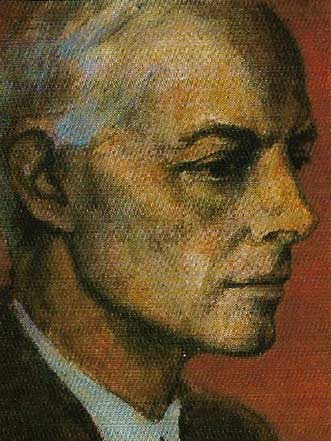Bartók, Béla (c. 1881–1945)

Portait of Bartók by Roboz.
Béla Bartók was the greatest Hungarian composer since Liszt. He and Kodály put Hungary on the international musical map.
Both Bartók's parents were musical, and he was taught the piano by his mother. He began to compose at the age of nine, and made his pianistic debut at 11. In 1903 he emerged from his studies at the Budapest Academy as a virtuoso pianist and a promising composer. From the start, Béla immersed himself in the idioms of Hungarian folk music. His first folk song collection was published in 1906, and in 1907 he became a piano professor at the Budapest Academy, a post which enabled him to pursue systematic research into folk music from Hungary, Romania, Slovakia, and Transylvania. From this time onwards he began to publish folk song anthologies for voice and piano, and arrangements of folk songs, such as For Children (1908–1909). The Ten Easy Pieces, the 14 Bagatelles (both 1908) and the ferocious Allegro barbaro for piano (1911) are also strongly Hungarian in idiom. Another era influence, the atmospheric music of Debussy, informed Bartók's works from the First String Quartet (1908).
Works for the stage
In 1909 Bartók married his pupil Márta Ziegler, who gave birth to a son in 1910. The next year Bartók completed his one-act opera A kékszakállú herceg vára (Duke Bluebeard's Castle). This masterly score, based on a psychological interpretation of the Bluebeard legend, was not performed until 1918, after his ballet A fából faragott királyfi (The Wooden Prince) had been successfully staged in Budapest. Up to that point, Bartók's compositions had been largely neglected in his own country, but growing recognition of his talent prompted a second ballet, A csodálatos mandarin (The Miraculous Mandarin, 1918–1919), whose sordid subject-matter caused outrage at its Cologne premiere in 1926. (The mandarin is lured into a robbers' den by a prostitute, but though stabbed and hanged by the men he refuses to die until he has had sex with her.)
During the post-war years Bartók began to tour widely as a pianist. In 1923 – when his Dance Suite, celebrating the 50th anniversary of the union of Buda and Pest, was premiered he divorced Marta and married another young piano pupil, Ditta Pásztory. A second son was born in 1924.
Meanwhile, Bartók continued his dual career as pianist and composer. Many of his piano works – such as the First and Second Concerto (1926 and 1930–1931), the Sonata, the Suite Out of Doors, and the Nine Little Pieces (all 1926) – were written for himself to play. His Third and Fourth String Quartets date from the late 1920s, as do the two Rhapsodies for violin and piano, both written for Hungarian virtuosi. The Cantata profana (1930) – a paean to the brotherhood of nations – was premiered in London in 1934, the year Bartók finally relinquished his teaching duties at the Budapest Academy to concentrate on his ethnomusicological work.
New musical structures
The late '30s, a period during which Bartók was preoccupied with musical structure, especially arch forms and constructions based on mathematical rules – produced some of his finest compositions, including the Fifth and Sixth String Quartets. He was equally concerned with timbre, exploiting the innovative sounds produced on conventional instruments, in works such as the Music for Strings, Percussion and Celesta and the 1939 Divertimento for strings. The Sonata for two pianos and percussion (1937) was premiered by Bartók and his wife; the Second Violin Concerto (1937–1938) was written for Zoltán Székely and Contrasts for the violinist Joseph Szigeti and the clarinettist Benny Goodman. During the 1930s Bartók also published Microkosmos, six books of piano teaching pieces.
America
In 1940, alarmed by the threat of fascism, the Bartóks left for America, where they settled in New York. The last five years of Bartok's life were clouded by public neglect, financial worries, and declining health. In 1943 he was diagnosed as suffering from a rare form of cancer. He completed his most popular work, the Concerto for Orchestra (premiered by Serge Koussevitsky and the Boston Symphony Orchestra), in the summer of 1943, and the solo Violin Sonata, written for Yehudi Menuhin, the following March. His last works were theThird Piano Concerto (1945), written for his wife, and the Viola Concerto for the Scottish-born player William Primrose, which was left unfinished at his death in September 1945.
Major works
Six string quartets (1908–1939); Duke Bluebeard's Castle (1911–1918); The Miraculous Mandarin (1919); Microkosmos (1926–1939); three piano concertos (1926–1945); Music for Strings, Percussion and Celesta (1936); Contrasts (1938); Concerto for Orchestra (1943).


